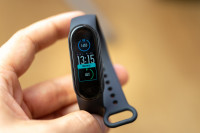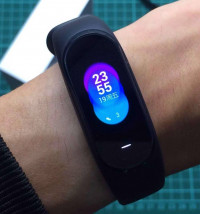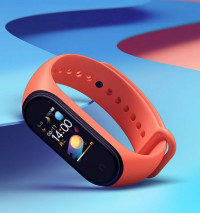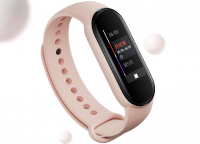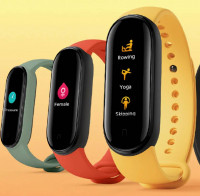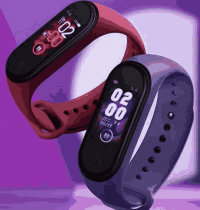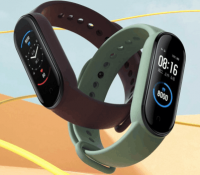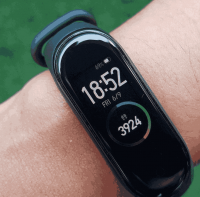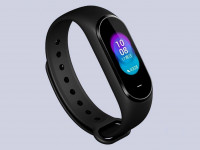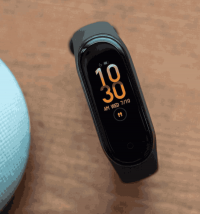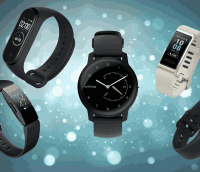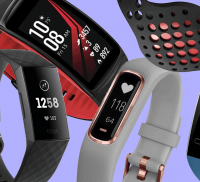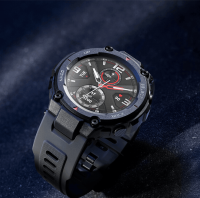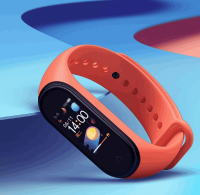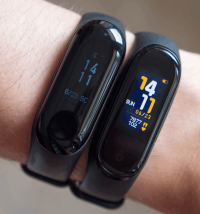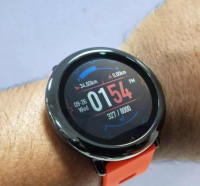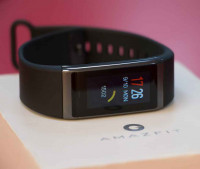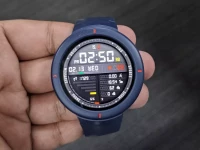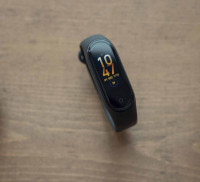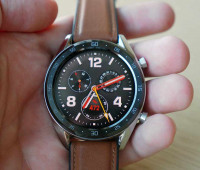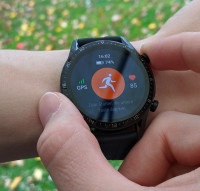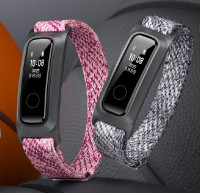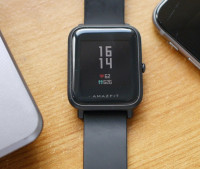Amazfit GTR review
OUR VERDICT
The Amazfit GTR is a solid budget smartwatch with deceptively good activity tracking, and its GPS is accurate enough to make it your main device for outdoor runs. The software feels sluggish, and its notifications are bare-bones, but its long battery life just about makes up for its shortcomings.
+FOR
Looks elegant
Sharp, vibrant display
Long battery life
-AGAINST
Basic notification features
Few app integrations
Swiping between screens is sluggish
The Amazfit GTR is the latest smartwatch from Huami, a company backed by Chinese tech giant Xiaomi which is continuing its near two-year tradition of churning out impressive budget smartwatches under its Amazfit brand, including the Stratos, the Verge, and the Bip.
The Amazfit GTR is is another of Huami's affordable smartwatches that makes bold claims about its style, display and extended battery life.
On the specs sheet, it certainly looks like good value for its pricetag: at around £100/$170 - prices vary depending on the size and style you choose - you get GPS, a battery that can supposedly last up to two weeks with normal usage, tracking of 12 different activities, step counting, sleep monitoring, and an AMOLED display with 326 pixels per inch, the same resolution density found on an iPhone 11.
So how does it fare in practice? After spending more than a week with its 42mm and 47mm variants, we’ve come away impressed by just how much the Amazfit GTR can do, particularly with its exercise tracking. Its battery life is also among the best you’ll find at this price, even if it doesn’t quite live up to the company’s lofty promises.
t's impressive for the price, but there’s no avoiding that it’s a budget, basic smartwatch with no real app integration outside of notification tracking. Worse, its software makes the simple act of swiping through screens feels sluggish.
Amazfit GTR price and release date
Out now
Starts at £99 / $170 / AU$267
The Amazfit GTR is available now in the UK, US and Australia, with the 42mm model starting at £99 / $170 / AU$267, while the 47mm size starts at £115 / $180 / AU$272, though prices vary a bit from store to store.
The GTR isn't as widely sold as some wearables, but it can be found from Gearbest in all three countries, and from Amazon in the US and the UK.
Design and display
Sharp display works well in any light
42mm looks slim and sporty, while 47mm leather strap gives a classic feel
Black watch face bezel lends a premium look
There’s a huge difference in the design of the two variants. The 42mm feels sleeker and sportier: it has a silicone strap and most of its designs are single color, giving it an understated look.
The 47mm Amazfit GTR feels more like a classic watch, with a titanium or aluminum alloy body and a traditional leather strap. The underside of the strap is silicone, which means you can wear it for exercise without worrying about damaging the leather — a thoughtful touch.
The face on the 47mm model is, naturally, bigger. We have relatively thin wrists, but it didn’t look too large: it shouldn’t be a problem unless you have exceptionally thin wrists.
Both watches have thick bodies, around 1cm deep, and when we first saw them out of the box we worried they'd look chunky. But when we wore them, they looked perfectly natural, and neither felt heavy.
Both sizes are stylish in their own right, and the matte black bezel on our units make them look more expensive than they actually are. Though note that some models come with a different color bezel.
The two buttons on the right-hand side of the watch face are sturdy, and just the right size: big enough that you can’t press them accidentally, but not so big that they distract from the display.
The screen itself is one of the Amazfit GTR's best features. The 42mm version has a 390 x 390, 1.2-inch AMOLED display, while the 47mm has a 454 x 454, 1.39-inch AMOLED display.
The size difference means they both come out at 326 pixels per inch, the same density as an iPhone 11, and that translates to a clear, crisp picture with plenty of detail. You can read small words and numbers easily, and nothing was ever distorted in our time with the smartwatch.
Bright colors looked vibrant too, and you can choose from plenty of watch faces from the Amazfit app, so we picked a yellow one that really popped from our wrist.
The screen is also bright enough to view in full daylight, and we never had a problem with sun glare making it hard to read.
Performance
Limited app integration
Sluggish swiping between screens
In-depth heart rate statistics
Accurate GPS for run/walk tracking
At this price point, you wouldn’t expect any fancy app integrations, especially as the Amazfit GTR runs proprietary software, rather than Wear OS, and indeed it offers few surprises.
You can flick between tracks if you’re playing music on your phone (although you can’t store music on the device), and the few built-in Amazfit apps - such as weather, heart rate tracking, and ‘find my phone’ - are easy to navigate on your wrist. But generally, you use the GTR for checking app notifications, and not much more.
It’s a shame, then, that those notifications feel like afterthoughts. When they pop up, they look off-center, and use an awkward font. They display little detail: you can’t see the body of emails, for example, only the subject line.
Emojis from WhatsApp messages won’t show up, which is annoying, and there’s no option to act on notifications, such as replying to a message. Essentially, it feels as basic as it could possibly feel. It's a reminder to look at your phone, and not much more.
We like that notifications are off by default and that you need to enable apps individually, which keeps distractions to a minimum. But when alerting you to notifications is the thing you’ll use the GTR for most often, it’s disappointing that it feels so spartan.
But the low price comes at a cost to performance. Swiping between watch faces feels sluggish. Sometimes, the watch has a delayed response to your touch; other times, it simply chugs between the various screens.
Occasionally, it failed to register our swipes completely, particularly when we were swiping down on the watch face to access settings or a do not disturb mode. However, turning our wrist to wake the screen up worked reliably, and we were always able to see the time at a glance.
We also like that you can program one of its side buttons to perform a number of functions, such as to show your heart rate, the weather, or a compass. We set it to launch an activity, which was handy for starting runs or walks.
Fitness and tracking
Accurate step tracking, GPS and heart rate
PAI score isn't reliably tracked
App is fiddly but includes a lot of stats
The Amazfit GTR fares better when it’s tracking your activity than when it’s displaying notifications. Step count was accurate - when we walked 100 steps it always got within five - and heart rate was largely correct, when compared to our manual tests over the course of a minute.
We were also impressed by the level of detail within the Amazfit app: on your step count page it will tell you how far you traveled, how many calories you burned, and estimates of your activity history, including whether you were walking fast or slow.
You can tell the watch to track your heart rate constantly, which measures it every minute while still getting strong battery life (see below). We enjoyed looking back on our heart rate at the end of the day, and during 30-minute runs we could see when our pulse quickened as we ran faster.
If you don’t want to track heart rate all the time, then you can set it to track sporadically to save battery, and then ask it to detect when you start an activity, at which point it will track your pulse constantly. This was hit and miss: once, tracking kicked in immediately when we started running, but the next time it took a good 90 seconds to catch up.
The GTR will automatically tell you your Personal Activity Intelligence score - a popular measure of activity backed by a fair bit of science - for the week, calculated based on your heart rate. The idea is that reliably getting the score over 100 each week decreases your risk of health issues, such as heart disease.
It has limited success, here. Having a specific score to aim at gave us plenty of motivation to exercise, but we felt like the score wasn’t racking up when it should have been.
A single run would increase our score by 30, but PAI is also meant to take into account lower-level activity such as walking. A heavy weight session when our heart was pumping didn’t make a dent in the score, unfortunately.
Sleep tracking was... well, it’s sleep tracking on a smartwatch, with all the limitations that comes with that. The Amazfit GTR will track when you fall asleep, when you wake up, and when you’re in deep sleep.
The deep sleep proportion is impossible to verify - smartwatches in general aren’t a good tool for this - but the time slept was, we found, broadly accurate.
It sometimes thought we’d fallen asleep earlier than we actually did, probably because we were just lying still, and it failed to detect us waking up in the middle of the night. But for comparing how long you’re sleeping night-to-night, it’s perfectly fine, and it will tell you how you measure up against other users.
Where the GTR impressed us most was when it was tracking outdoor runs or walks with the built-in GPS, which works independently of your phone.
The GPS occasionally took a while to get a position lock, sometimes two minutes or more, but when it found us, it remained accurate: when we synced with the Amazfit phone app post-run, it traced the line of our route without any noticeable mistakes. The same was true for walks.
The Amazfit app itself can be a bit fiddly, and it’s not immediately obvious where you go to view your tracked activities. However, when you do find a run or walk, it gives you plenty of detail, including time splits by kilometer, average and max heart rate, altitude changes, and how long you paused the activity for.
It was far more than we’d expect from a smartwatch this cheap, and means that we can happily use this as our main activity tracker while out running (albeit with our phone in tow, to listen to music).
That said, remember, this is still a budget smartwatch. It has 12 exercise options to track including swimming, and should be water resistant up to 50m (we only tested it in a sink, where it held up fine). It won’t track more complex motions, like reps in a weight-lifting session. Most gym activities are just grouped broadly under the ‘exercise’ heading, which isn’t all that useful - you can manually tag them later if you want to go to that effort, though.
Battery life
42mm not as impressive as Huami’s estimates, but you’ll still only be charging once a week
47mm drains around 5% a day, which is incredible for a watch this affordable
GPS doesn’t cause too big a strain
Huami reckons you’ll get 12 days out of the 42mm watch under normal usage, but we fell far short of that. Its estimate is based on constant heart rate detection, sleep monitoring and three, 30-minute GPS exercise sessions a week, which is essentially the setup we had. But after seven days, we were down to the dregs.
It’s therefore less impressive than the company would have you believe. However, we don’t think it’s a big issue, as a week on a single charge is still impressive, stretching longer than almost anything on our list of best cheap smartwatches including pricier wearables than the GTR. Going a week on a single charge for any smart device is, to us, a win.
The 47mm is even better: its bigger body can fit a 410mAh battery, compared to the 195mAh battery in the 42mm version. That size makes a huge difference - we didn’t have time to run it down to zero from full charge, but it was using around 5% per day without GPS, with up to 10% on days with GPS.
Extrapolating, you’re probably looking at 15-20 days of battery life on a full charge. That’s not quite the 24 days of normal usage Huami claims, but it’s still more than enough.
Verdict
The Amazfit GTR is a solid budget smartwatch with a long battery life. It’s a shame that its core notification tracking is so stripped down, and that its software feels choppy. But on the plus side, you’re getting a sharp screen and surprisingly accurate activity tracking, particularly for outdoor runs using GPS.
It looks the part, too, which is rarely the case in this price bracket. Whether you go for the sportier 42mm or the more classic 47mm style, you’ll be able to pair it with most outfits.
Unless you have a tiny wrist, we’d opt for the bigger version: the beefier battery makes a difference, and the strap’s silicone underside means you can still exercise with it.
Who's this for?
If you want to go as long as possible between charges, the Amazfit GTR won’t let you down, with better battery life than almost anything in this price range.
It’s also a good bet for anybody who wants an activity tracker on a tight budget, and doesn’t want to fork out for an extra heart rate monitor. We were impressed by how accurately it recorded our outdoor runs, and by the detailed insights it gave us into our daily activities, such as our step count.
Should you buy it?
If you want an affordable, one-stop smartwatch for your notifications and activity tracking, you won’t regret buying the Amazfit GTR. If you need something that runs smoothly and integrates with lots of apps on your phone, look elsewhere.
